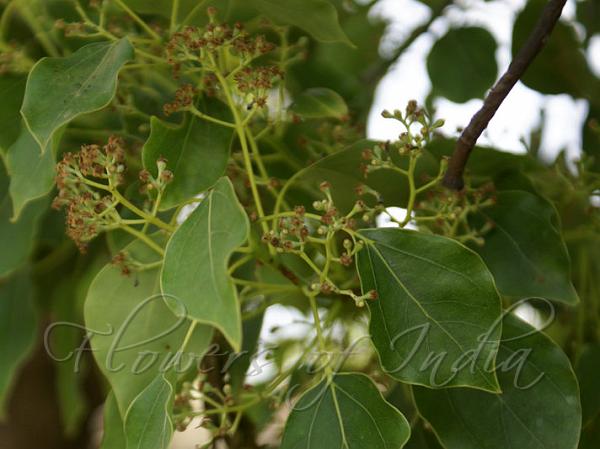|
| Camphor Tree |
|

|

| File size | 95488 |
| Original date | 4/9/11 12:18 PM |
| Resolution | 712 x 534 |
| Flash | Flash did not fire, auto |
| Focal length | 70.0mm |
| Exposure time | 1/160s |
| Aperture | 5.6 |
| Focus Distance | |
| Metering Mode | Multi-segment |
| Camera make | SONY |
| Camera model | DSLR-A100 |
| Sensor type |
|
|
|
|
Photo: |
Botanical name: Camphora officinarum Family: Lauraceae (Laurel family)
Synonyms: Cinnamomum camphora, Laurus camphora
Synonyms: Cinnamomum camphora, Laurus camphora
Camphor Tree is a large evergreen tree that grows up to 20-30 m tall. The
leaves have a glossy, waxy appearance and smell of camphor when crushed.
Alternately arranged 1-4 in long oval leaves dangle from long stalks. Each
leaf has three distinct yellowish veins. The outer margins of the leaves
tend to be somewhat wavy and turn upward. The new foliage starts out a
rusty burgundy color, but the leaves soon turn dark green on the upper
sides and paler green underneath. New branches emerging from the shallowly
fissured grayish brown trunk are smooth and green. Twigs are usually
green, but may be tinged with red when young. The inconspicuous tiny cream
colored flowers are borne in the spring on branching 3 in flower stalks.
They are followed by large crops of fruit, comprised of round pea sized
berries attached to the branchlets by cuplike little green cones. The
berries first turn reddish, then ripen to black. Camphor tree can be
readily identified by the distinctive odor of a crushed leaf. Camphor Tree
is native to China, Japan, Korea, Taiwan, and adjacent parts of East Asia.
It is now cultivated in many parts of the world.
| Identification credit: Gurcharan Singh | Photographed in Panchkula & Kurukshetra, Haryana. |
• Is this flower misidentified? If yes,